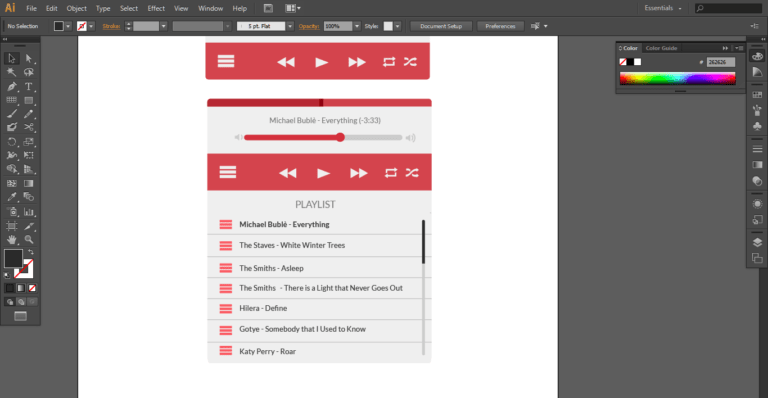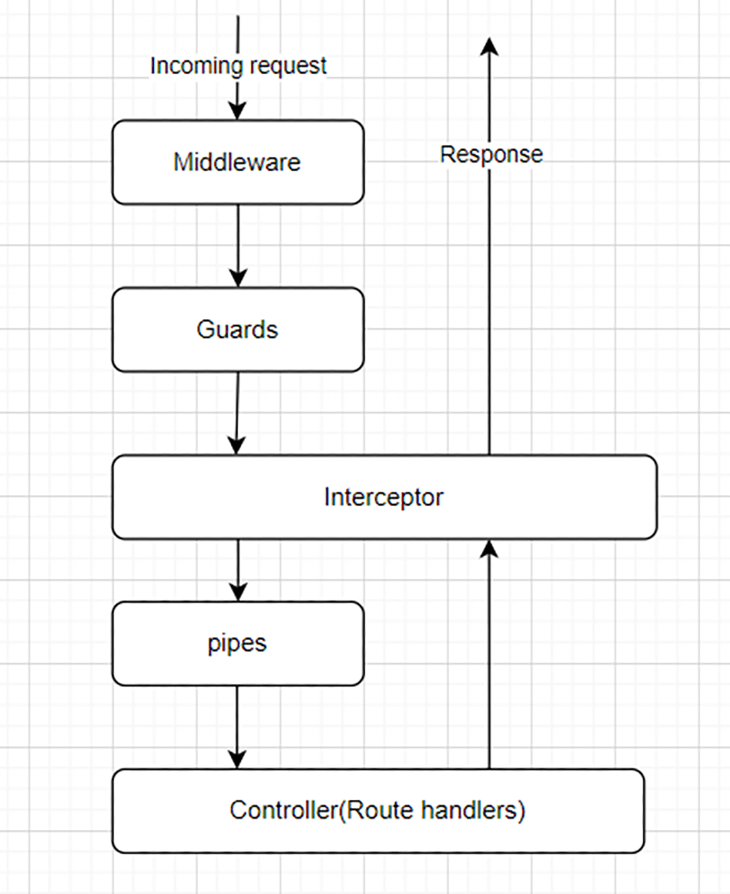
In this article, we’ll set up a method where you can receive a daily email with questions for you to answer. These questions can be un ique to yourself or be set up with inspiration from a brag document and a daily review. These will help you remember the things that you’ve done throughout the day and to analyze how you’ve felt and what occurred to make you feel that way.
What is a Brag Document?
Table of Contents
Our brain is not the best tool for remembering things unless you’re blessed with a photographic memory. You can find yourself not remembering things you’ve done in the last week or month.
A brag document is the ace up your sleeve when it comes to sitting in front of your manager for a review. Most of us work roughly about 2000 hours a year. How much of what you do, do you think your manager is aware of?
There could be things you’re working on that are making big changes in the business, but they never get brought up with your manager. It’s these little things that get skipped over and not considered when it comes to review time.
This is where a brag document comes in. To save you from having to use your not-so-good memory, why not receive an email every day that asks you what you’ve completed. This information is then stored in a Google sheet so you have complete records, from the smallest to the largest things you’ve managed to achieve at work.
Then, when it comes down to your yearly review, you can easily show all the things you’ve achieved, which can give you the leverage you need to get that well-deserved pay rise. ????
What Is Self Reviewing?
You’re looking to upgrade your car. You’ve had a motor for many years but it’s on its last legs, spurting black smoke and making clunking noises when you drive.
You’ve spent some time doing research to make sure you’re buying the right car. After a long debate, you settle on a BMW. And as if out of nowhere, you see the same make and model everywhere, even though weeks ago none of them were on the road.
This is called the Baader-Meinhof Phenomenon. It’s when something has been brought to your awareness and it appears to be everywhere. This is the effect that we’ll be trying to take advantage of with your self reviewing.
If you ask yourself “What bad habit did I partake in today?”, it’ll make you think about anything you consider a bad habit, like eating a whole pack of cookies or doom-scrolling on social media.
If we now do this for over a week, the Baader-Meinhof Phenomenon starts to occur. You now become more conscious about these behaviors. Rather than this behavior happening without thinking, you’ll be able to spot when it happens because you’ve been writing about it every day. And then you can make an effort to stop that behavior.
Self reviewing can also help you to analyze how your day went. Again, we have some questions that prompt us, such as “What did I enjoy doing?” or “What sucked the energy out of me?”
These are questions that can help you spot patterns and then take action. If you find that you enjoy writing, then you can plan to do more. If you find that talking to a certain someone at work drains all your energy, you can try to speak to them as little as possible, or pick times of the day when you have enough energy to deal with them.
With very little effort each day, you can start to collect important information, from the awesome work you’ve been doing, to the habits that are invisible to you, and then make plans each week to improve your life.
How to Set Up Your Daily Emails
There are three things that we need to be able to set up daily emails:
- a Zapier account
- a Google Drive account
- a set of questions
The Zapier account will handle the automation: the sending of the questions, and the parsing of the data from the email.
The Google Drive account is for setting up the Google Sheets where the data from email will be stored for reviewing our answers.
The set of questions will be the information we want to gather.
Before we begin, we need to set up an account on Zapier and make sure that we have a Google Drive account.
Once we’ve done that, we can get started.
Sending Daily Emails
To get things started, we need to send ourselves an email so we have a prompt to answer the questions.
To do that, we need to set up a zap in Zapier.
From the Zapier home page, click on the menu navigation and select Zaps.
Click on Make A New Zap.
The Zap we’re setting up is to send daily emails. We’ll set up another Zap to parse the data into the Google Sheets.
At the top of the screen, we can name our zap. Let’s name it Sending daily emails.

First, we select a trigger. Search for Schedule by Zapier.
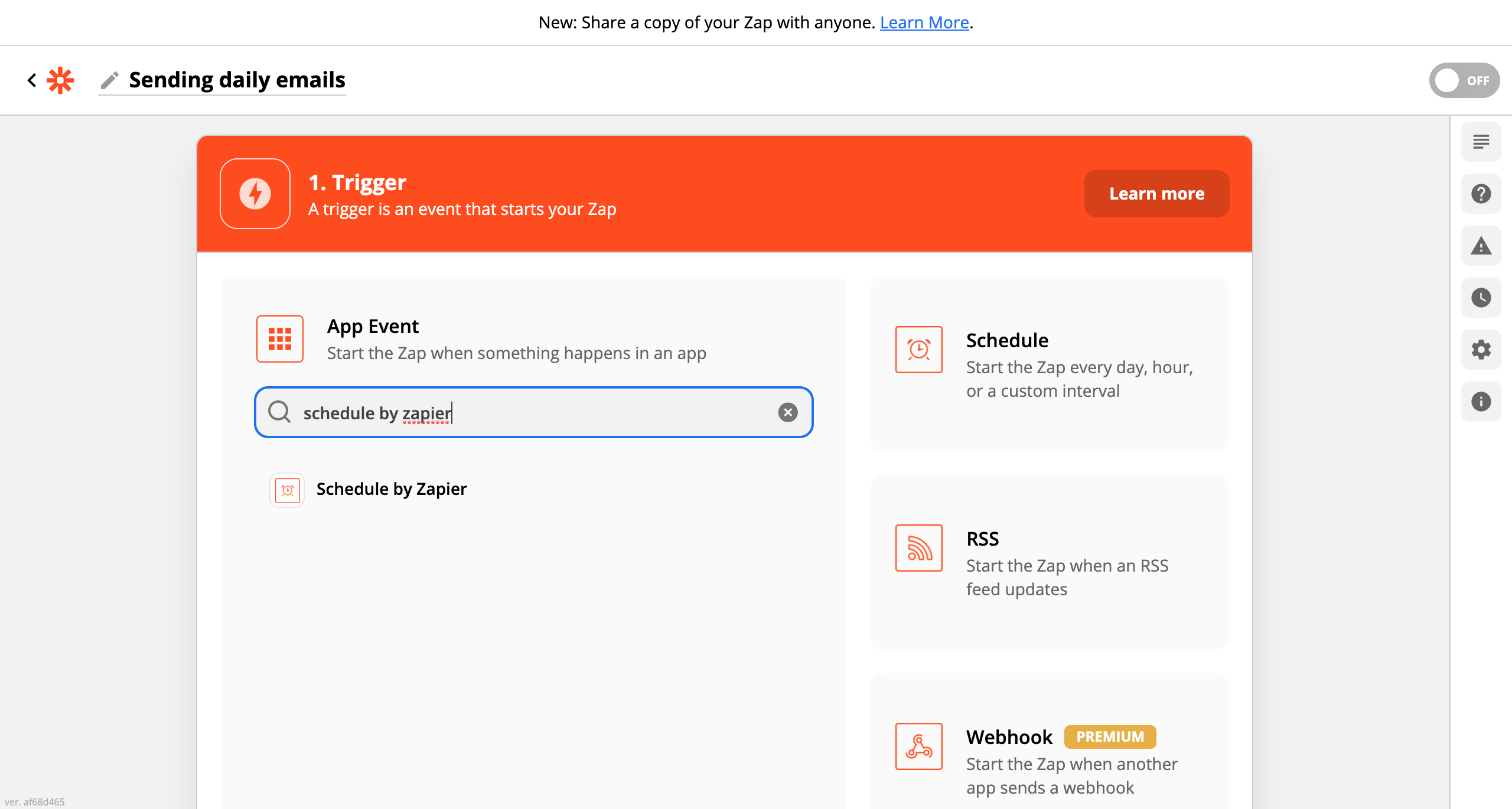
We then need to select the frequency of the trigger. We could make this daily, weekly, or monthly. On this occasion, we’re selecting daily.
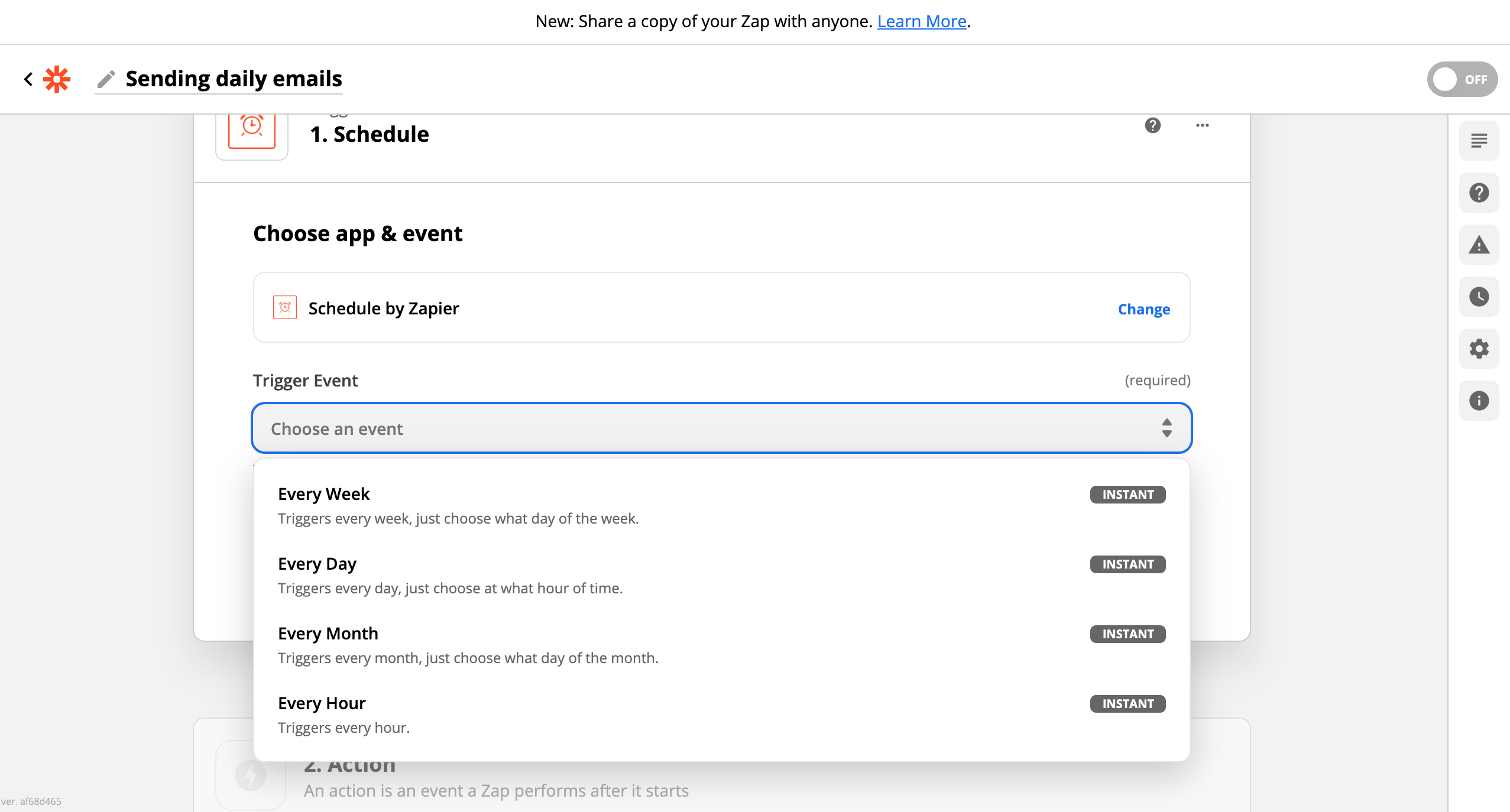
Next, we can choose if we want the email to be sent at the weekends and what time of the day we want to receive the email.
If we’re setting this up with our work email, it may be worth turning it off for weekends if we don’t work then. It’s best if we set the time for the end of the day, so all the events of the day are over and we have enough time to answer the questions. Setting it an hour before we leave is a good option.
It will ask us to test the trigger. Once done, continue.
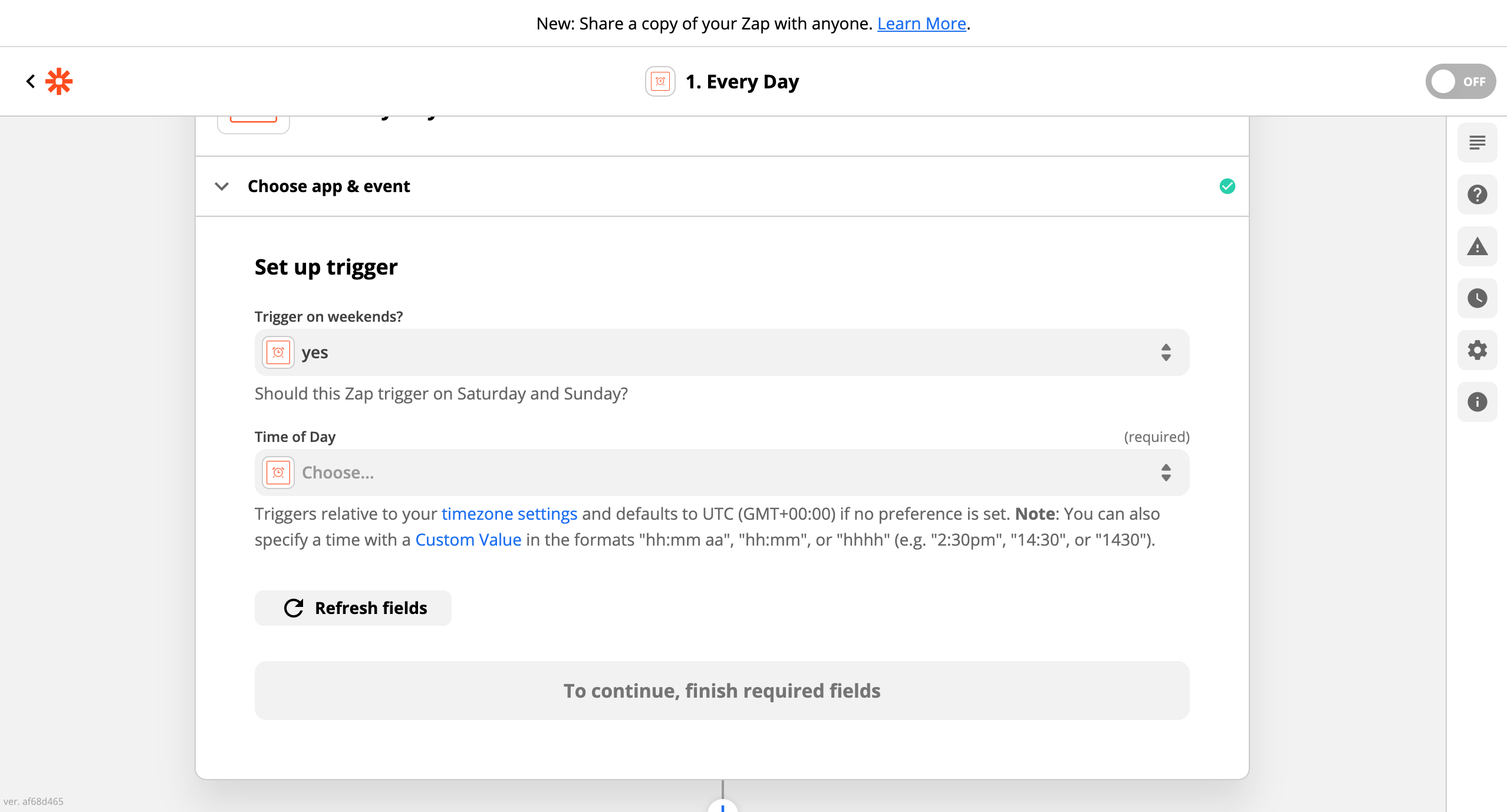
The action we want to happen with the above trigger is to send the email with our questions. We can do this by selecting Email by Zapier.
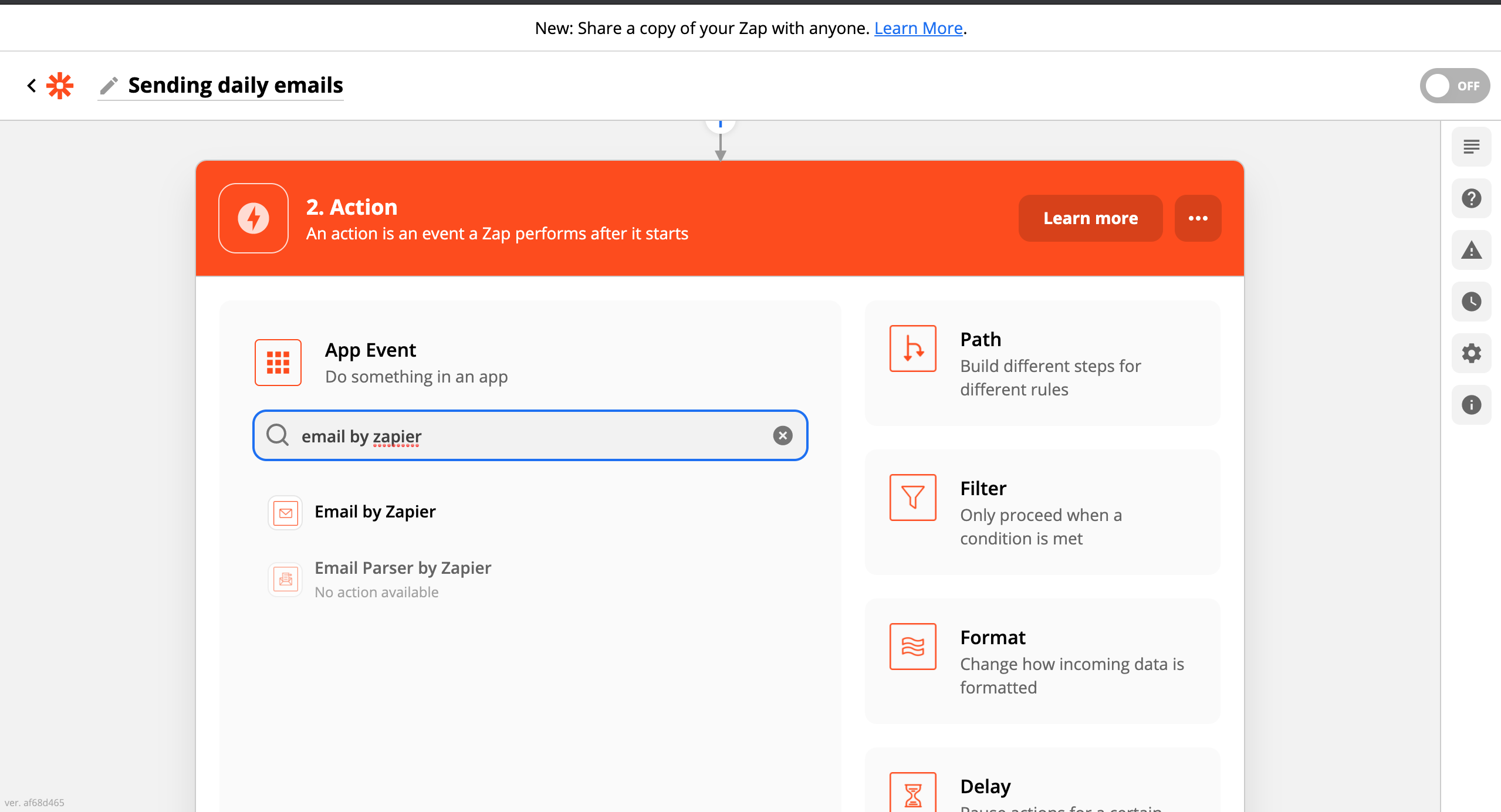
Once selected, we want to choose the action type as outbound email.
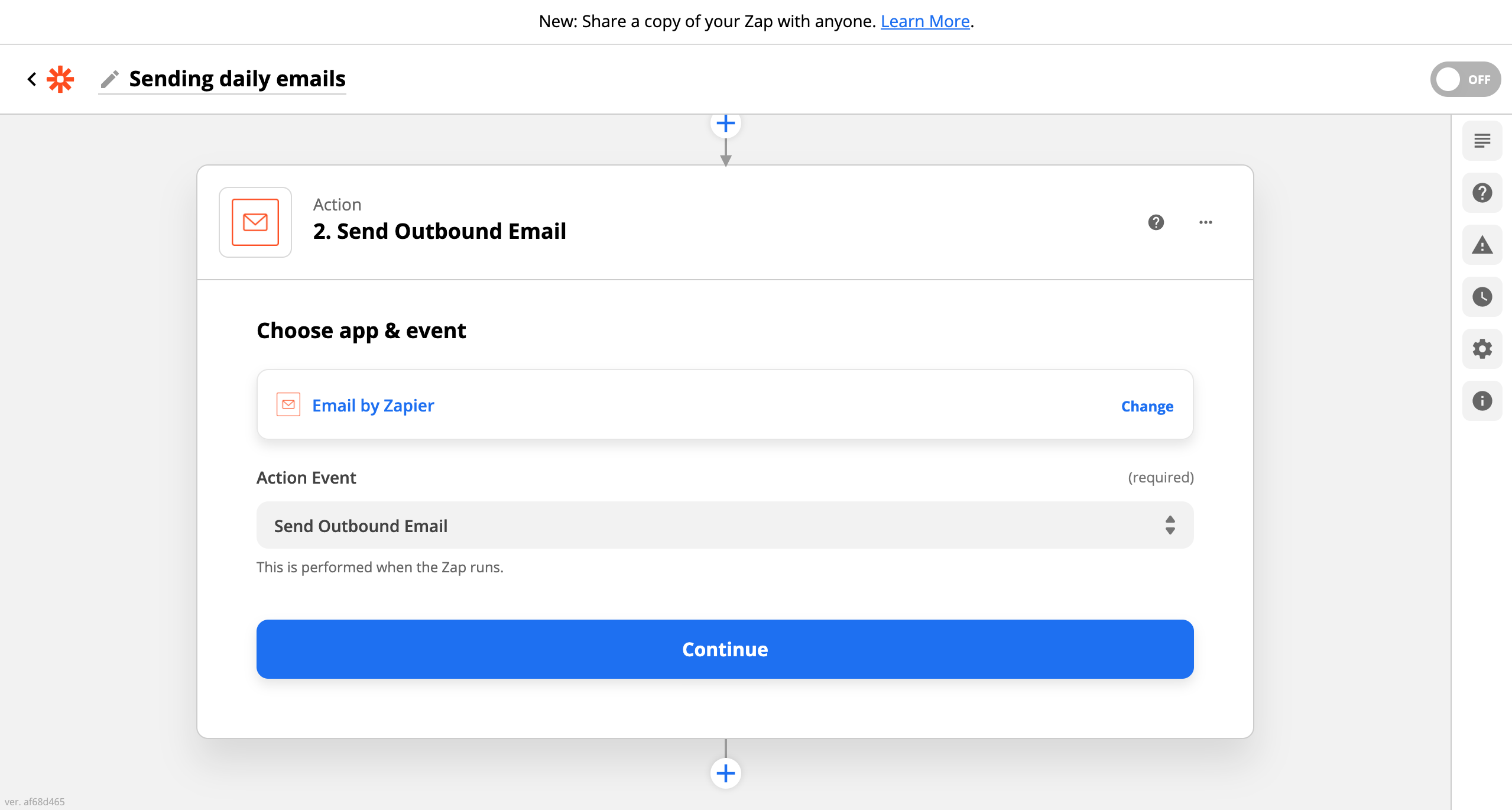
Next, we enter the email address we want to receive the questions at, the subject line, and the body of the email (which will be our questions). We’ll also need to enter an email address in the “Reply-To” field, but we’ll do that later.
Make sure that you leave space between each question so your answers can get parsed. You want three line breaks worth of space. At this point, we want a copy of the body of the email, so paste it to a Word doc or text note, as we’ll be using that later. The rest of the fields we can leave blank.
Continue reading Create Your Own Brag Document with Zapier and Google Sheets on SitePoint.


